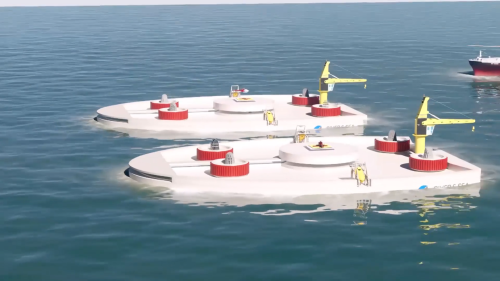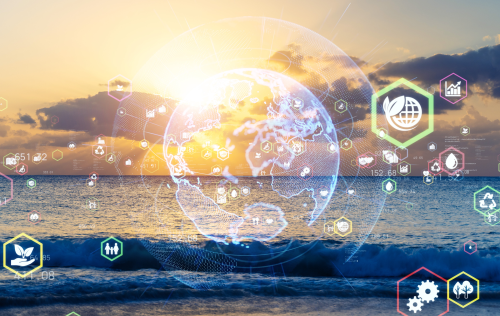Area usage, environment & economy
Our innovative concept for harnessing energy from slow-moving ocean, river, and tidal currents offers a major advantage: exceptionally low area usage. By operating beneath the surface and utilizing the natural flow of water, our system achieves the same energy output up to 95% less area usage than wind turbines—both on land and offshore.
This breakthrough in energy density (energy produced per m²) makes renewable energy more scalable, sustainable, and publicly acceptable—reducing visual and noise impacts while improving coexistence with other activities.

Why Low Area Use Matters—Especially at Sea
- Minimal Ocean Space Footprint
Low-area systems enable energy generation without disrupting marine ecosystems or human activity:
- Maritime traffic compatibility: Compact designs avoid interfering with shipping lanes, fishing zones, or recreational areas.
- Ecosystem protection: Smaller installations reduce impact on sensitive habitats like coral reefs, seagrass meadows, and spawning grounds.
- Simplified permitting: Lower spatial demand eases marine spatial planning and accelerates regulatory approval.
- Lower Costs in Deep Water
Smaller systems significantly reduce operational and capital costs in offshore environments:
- Simpler anchoring/mooring: Fewer or smaller structures mean less complex foundation and anchoring solutions.
- Easier maintenance: Reduced area results in shorter cable runs and more efficient inspections using ROVs or divers.
- Maximized Energy Density
High energy output per square meter makes our solution ideal for:
- Crowded EEZs (Exclusive Economic Zones) where fishing, conservation, and energy compete for space.
- Floating and submerged platforms where size, drag, and cost must be optimized.

Dispatchable Energy: 24/7 Renewable Power from the Sea
Unlike intermittent sources like wind or solar, our system delivers dispatchable (continuous) energy, providing power day and night, 365 days a year. This reliability makes it a true alternative to fossil fuels and enhances energy security for coastal regions.
Why Low Land Use Matters Too
While 71% of Earth is ocean, 29% is land—and land use is under increasing pressure. Our technology not only preserves sea space but also reduces pressure on land-based ecosystems.
- Environmental Preservation
- Protects biodiversity by avoiding land clearance and habitat loss.
- Conserves land for agriculture, rewilding, forestry, and communities.
- Economic Efficiency
- Lower land acquisition costs, especially in densely populated or high-value regions.
- Reduced infrastructure requirements, such as shorter transmission distances.
- Streamlined permitting through smaller environmental footprints.
- Stronger Social Acceptance
- Less visual and acoustic intrusion, minimizing local opposition.
- Smaller-scale deployments that integrate more easily into communities and landscapes.
Conclusion: A Scalable, Sustainable Path Forward
By dramatically increasing energy density and reducing spatial footprint, our marine current technology provides a viable and sustainable alternative to traditional renewable energy systems—both offshore and on land.
This approach balances environmental protection, economic viability, and public acceptance, positioning it as a key contributor to the clean energy transition.
